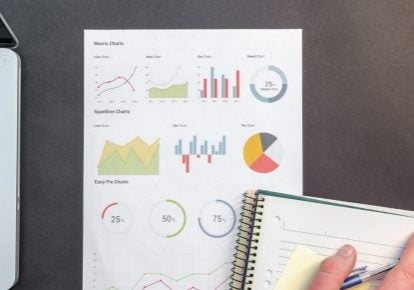
One thing is for sure: the e-commerce industry is never static. If you’re selling wares online, you need to have an eye on e-commerce trends and prepare to adapt to ongoing changes in everything from marketing to order fulfillment.
We’ve compiled a mid-year list of the e-commerce trends we see taking hold for 2020, and being widely adopted by 2021.
1. BOPIS and More Online-Offline Channel Integration
The COVID pandemic has accelerated e-commerce trends toward omnichannel fulfillment. It’s resulting in a physical vs e-store mindset shift. Websites don’t exist merely to supplement stores. Now, it’s the stores that are supporting online sales. The BOPIS trend (Buy Online, Pick Up In Store) was already taking hold when the pandemic hit, and it quickly became the primary means of survival for many. Used with Google Local Inventory Ads, BOPIS is an offline-online integration that will see increasingly wider adoption as consumers become used to doing their shopping online for same-day, or next-day, in-store pickup.
Many stores, like Lululemon, are using their stores as local fulfillment hubs for items purchased online. This also helps them maintain their retail staff during slow business times, as fewer shoppers are expected to return to their previous in-store shopping habits.
A lot of brands, such as JoAnn’s and local Ace Hardware affiliates, are late to this game but adapting well to the shift. But brands like Bandier and Best Buy, who had already made the transition, have a big starting advantage. Their investment in building out an online inventory and sales platform with flexible fulfillment options is proving to be worth its weight in gold. Having this infrastructure in place also opens the door for brands and retailers to connect their product listing feeds to expanding online channels such as Google Shopping.
2. Availability of more shopping channel and payment options
The introduction of Google Shopping has turned Google Search into a combination marketplace, shopping comparison engine and checkout register in one simple consumer user interface. Searchon Google for a product, see the listings pop up with product and ordering details, compare the options, then click on over to the payment page to confirm the order, using all your saved payment and account information from Google. Shopping is becoming more and more frictionless all the time for the consumer. For the seller, it means staying on top of the integrations required to participate, and literally getting with the programs.
Frictionless shopping is also becoming a standard, and at the front lines are the battle among payment processing services like PayPal, GAFA companies like Apple, and major banks like Capital One. Payment processors vie for the privilege of becoming the standard payment option for major e-commerce sites. The early marriage of eBay with PayPal (though they’re now effectively divorced) shows the symbiosis that has always existed between e-commerce and online payment capacity. PayPal’s big gambit now is its purchase of online discount-hunter site Honey, and other payment processors are mounting their own ventures.
Product visualization
Another of the emergent e-commerce trends, especially for luxury brands, is 3D and Augmented Reality (AR). Already popular with big furniture brands like Ikea, AR helps shoppers “see” an item in its place at home (or on their body in a virtual try-on). Fashion designer Rebecca Minkoff uses 3D models and augmented reality for customers to preview the items on their phones or tablets. And Gucci has introduced video consultations, where shoppers can view products and talk with a live salesperson.
Stickier content
Google developers have created progressive web applications (PWA) designed to load instantly, even if the user is offline. PWAs could be incorporated into a headless commerce strategy that would help site managers and developers to improve mobile performance.
Related to the PWA is the accelerated mobile page (AMP). Without getting too deeply into the technology aspects, these are mobile-first HTML copies of web pages that load instantly. AMPs are important for Google’s policy of prioritizing mobile optimization in search results.
Fulfillment Trends: Warehouse Robotics and Sustainable Packaging
Brands operating their own warehouse will increasingly consider robotics to cut costs and become more efficient.
And Amazon is getting serious about packaging standards. The company is charging fees to sellers if they don’t comply with its sustainable packaging guidelines. Oversized or unnecessary packaging will ding you with a $1.99 charge. The new requirements include foregoing boxes in favor of flexible mailers, requiring fully recyclable mailers, and better matching products with appropriate sized boxes. It’s also something that your customers will notice and appreciate, whether you sell on Amazon or elsewhere. Anyone who has been getting through the pandemic by online shopping knows the headache of excess cardboard disposal.
AI and Machine Learning for Voice Shopping and Search Applications
As shopping search query styles evolve (and they do evolve, just like hairstyles over time), the e-commerce manager has to stay ahead of the curve if they want to stay ahead of the competition. This is where Shoppingfeed has been focusing its own technology development. We recently debuted our exclusive ProductGraph technology, which uses machine learning to understand how humans think and express their wishes when it comes to describing a product they want. Fluid product tagging enables us to mark our users’ products with every conceivable type of product attribute, saving sellers the effort of developing their own attributes in hit-or-miss fashion. You can read more about our ProductGraph and see examples by clicking below to view the White Paper.




